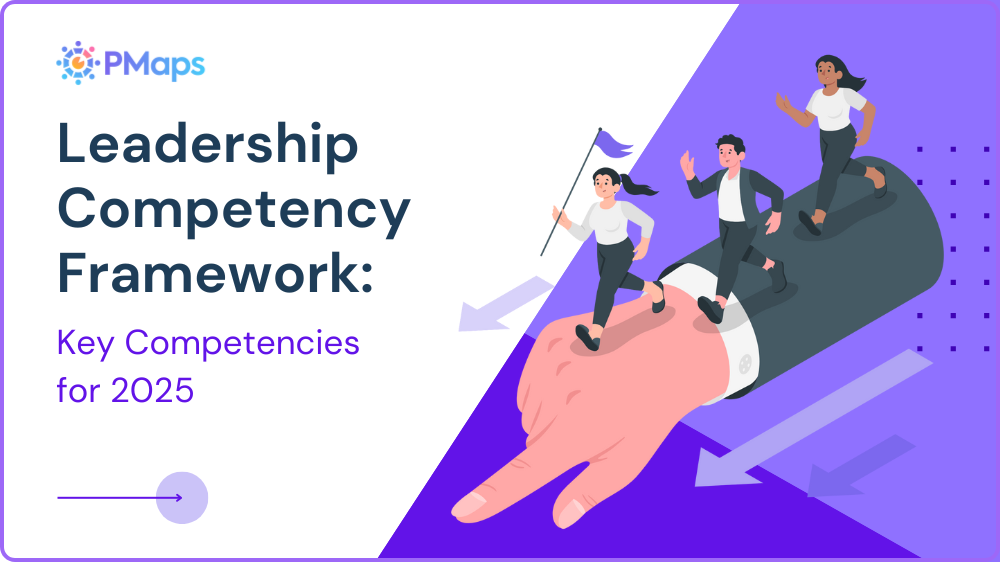
Leadership competencies shape how organizations prepare for the future. As workplaces adapt to digital disruption, global competition, and hybrid teams, leaders need more than experience to succeed. They require measurable leadership skills and competencies that guide decision-making, influence culture, and drive performance.
A well-structured leadership competency framework helps HR leaders define expectations, assess capability gaps, and design development programs. By focusing on the key leadership competencies relevant for 2025, businesses can build leaders who inspire employees, maintain organizational trust, and adapt confidently to uncertainty.
Leadership Skills and Competencies in Workplace
Workplaces today demand leaders who balance technical knowledge with people-focused skills. Strong leadership skills and competencies enable individuals to guide teams, manage change, and foster innovation. These competencies differ depending on role and responsibility but remain central to organizational growth.
HR Leadership Competencies
HR leaders play a critical role in shaping workplace culture and talent strategy. The following hr leadership competencies ensure they align workforce priorities with organizational goals.
- Strategic Workforce Planning – Anticipating future talent needs while aligning hiring with business objectives.
- Employee Advocacy – Representing employee concerns while maintaining organizational balance.
- Change Management – Supporting employees during transitions and organizational restructuring.
- Data-Driven Decision Making – Using analytics to measure engagement, turnover, and performance.
- Policy Development – Establishing frameworks that safeguard compliance and fairness.
Leadership Competencies for Managers
Managers translate vision into action. Their leadership and management competencies ensure daily operations support long-term business strategy while maintaining employee engagement.
- Performance Management – Tracking, evaluating, and coaching employees to achieve objectives.
- Delegation – Assigning responsibilities based on strengths and capacity.
- Conflict Resolution – Addressing disputes quickly and constructively.
- Communication – Ensuring clarity between leadership and frontline teams.
- Decision-Making – Balancing speed with accuracy under time-sensitive conditions.
Leadership Skills for High Performing Teams
High-performing teams need leaders who cultivate trust, accountability, and innovation. These leadership competencies examples demonstrate how leaders sustain productivity and collaboration.
- Team Building – Creating environments where collaboration thrives.
- Motivational Skills – Inspiring commitment and enthusiasm toward goals.
- Adaptability – Navigating fast-changing priorities with confidence.
- Innovation Support – Encouraging employees to explore creative solutions.
- Emotional Intelligence – Recognizing and managing emotions within teams.
Leadership Competency Models
A leadership competency model provides a structured approach to defining and measuring leadership effectiveness. It highlights the leadership core competencies organizations expect from current and future leaders. Models ensure consistency in evaluation, development, and succession planning across different leadership levels.
- Behavioral Models – These models emphasize observable behaviors that distinguish strong leaders. Competencies such as communication, problem-solving, and decision-making are measured consistently, ensuring organizations promote leaders who demonstrate proven behaviors instead of relying on subjective impressions.
- Functional Models – Functional models outline competencies tied to specific business domains like finance, HR, or operations. They allow leaders to succeed by mastering technical knowledge while applying leadership behaviors aligned with their particular area of responsibility.
- Role-Based Models – These models customize competencies for leadership positions across the hierarchy. Executives, middle managers, and team leaders each require distinct skills. Tailoring expectations ensures competency frameworks remain relevant at every organizational level.
- Hybrid Models – A hybrid approach combines behavioral, functional, and role-specific elements. These models provide comprehensive coverage, allowing organizations to evaluate leaders holistically while accommodating diverse leadership needs in complex or evolving environments.
- Global Competency Models – For multinational organizations, global models define competencies like cultural awareness, adaptability, and inclusive leadership. They help leaders operate effectively across borders, uniting global teams under shared values while respecting regional differences.
Identifying Leadership Skills and Competencies
Identifying leadership potential requires structured, evidence-based methods. HR leaders should rely on tools that capture both measurable performance and behavioral traits. Combining assessments with observation ensures leaders are evaluated fairly while uncovering their readiness for higher responsibilities.
- Competency Assessments – Structured evaluations measure leadership core competencies against organizational benchmarks, highlighting strengths and gaps for targeted development programs.
- Personality Assessments – These tools assess personality traits that influence leadership styles, decision-making approaches, and team collaboration effectiveness in the workplace.
- Behavioral Event Interviewing – A technique where candidates recall past situations, helping HR predict future leadership performance based on proven experiences.
- 360-Degree Feedback – Comprehensive feedback collected from managers, peers, and direct reports, offering balanced insights into leadership behavior and effectiveness.
- Performance Metrics – Quantifiable results such as employee engagement, turnover rates, and goal achievement validate leadership impact on organizational outcomes.
- Observation Monitoring – Continuous workplace monitoring allows leaders’ everyday behaviors, interactions, and decision-making approaches to be evaluated in real contexts..
Conclusion
Building future-ready leaders requires more than intuition—it demands clarity through defined leadership competencies. By focusing on measurable skills and behaviors, organizations strengthen performance, trust, and succession planning. Structured competency models and assessments highlight growth opportunities, helping HR leaders prepare employees for evolving workplace challenges.
PMaps provides scientifically validated tools for developing leadership competencies, enabling businesses to identify strengths and design personalized development pathways. To strengthen your leadership pipeline and ensure sustainable success, connect with us at 8591320212 or write to assessment@pmaps.






.png)


